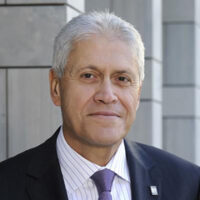Expertise
-
Professor Emeritus
Mechanical Engineering
Overview
Specific Research Activities
Current research interests are primarily related to i) the physics of twophase flow and its application to the power and process industries, and ii) modelling of buoyancy induced flows.
The research program in twophase flow is directed mainly towards the development of constitutive relationships and providing benchmark data for the verification of computer codes. Typical ongoing and planned research programs include, i) an experimental and analytical study of the characteristics of steamwater flow in network branches, involving determination of phase separation and pressure variations at piping junctions, ii) a study of subcooled flow boiling in vertical channels, involving experimental investigation into the axial void fraction profile as well as the local bubble behaviour and size. Gamma densitometry is used for void fraction measurements while a high speed video camera and digital image processing technology is used for studying bubble behaviour. Correlations for bubble size, interfacial area concentration and interfacial heat transfer coefficients are developed. The study also involves modelling of the onset of significant voids (OSV) phenomenon and modelling the axial void distribution in boiling and condensing flows. (iii) an experimental study in the use of electric fields to enhance the boiling heat transfer of refrigerant R-134a which is concerned with quantifying the electrohydrodynamic (EHD) enhancement of convective flow boiling in narrow channels. All the above studies are supported by and coordinated with the power industry.
The research program on buoyancy induced flows involves an experimental and numerical study of turbulent mixed convective flow in an enclosure. Laser Doppler Anemometry (IDA) and Particle Image Velocimetry (PIV) are used to study the flow field. Numerical modelling of buoyancy induced flow involves the use of various turbulence modelling methods, standard K-E model, low Reynolds number modelling, algebraic stress models and Reynolds stress models. The above developments are used in many industrially funded projects.
B.Sc., Cairo University; M.Eng., McMaster University; Ph.D., McMaster University
Recent
- Zeitoun, O., Shoukri, M. and Chatoorgoon, “Interfacial Heat Transfer Between Steam Bubbles and Subcooled Water in Vertical Upward Flow”, ASME J. of Heat Transfer, Vol. 177, 1995.
- Abdul-Razzak, A., Shoukri, M. and Chang, J.-S., “Characteristics of Refrigerant R-134a Liquid-Vapour Two-Phase Flow in a Horizontal Pipe, ASHRAE Trans., Vol. 101, Part 1, 1995.
- Zeitoun, O. and Shoukri, M., “Measurements of Interfacial Area Concentration in Subcooled Liquid-Vapour Flow”, Nuclear Engineering and Design, 152, pp. 243-255, 1994.
- Shoukri, M., Abdul-Razzak, A. and Yan, C., “Hysteresis Effects in Counter-Current Gas-Liquid Flow Limitations”, Can. J. of Chemical Engineering, 72, pp. 576-581, 1994.
- Shipp, P., Shoukri, M. and Carver, M.B., “Double-Diffusive Natural Convection in a Closed Annulus”, Numerical Heat Transfer, Part A, Vol. 24, pp. 339-356, 1993.
- Abdul-Razzak, A., Shoukri, M. and Chan, A.M.C., “Rewetting of Hot Horizontal Tubes”, Nuclear Engineering and Design, 138, pp. 375-388, 1992.
- Ballyk, J.D. and Shoukri, M., “On the Development of a Model for Predicting Phase Separation Phenomena in Dividing Two-Phase Flow, Nuclear Engineering and Design, 123, pp. 67-75, 1990.

